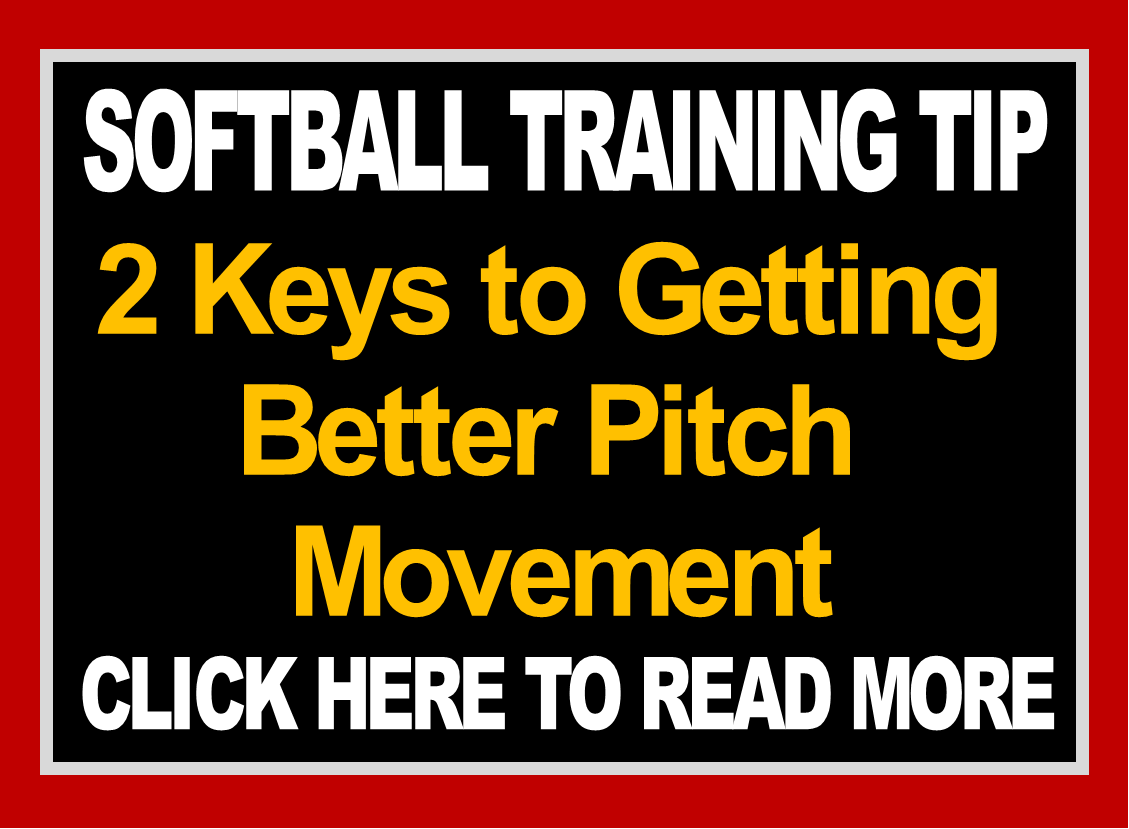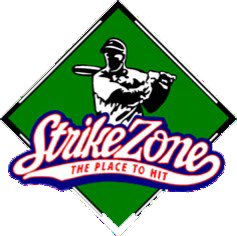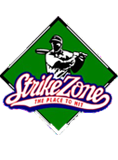
18 Jun 2 Keys to Getting Better Pitch Movement
All great pitchers control two very important things: their Entrance Path and their Pitch Movement Path.
Learn how to help your pitchers do the same thing.
Making a pitch move, or change directions, is one thing, but getting it to move as close to the batter (or homeplate) as possible and as fast as possible is quite another. Here’s why – imagine you’re the batter and a pitch is heading toward the plate, FAST! Your brain quickly works to figure out two critical things; when the ball will get to you (how fast it’s going) and where the ball will end up when it gets there (will it be in or out, up or down). The better you do at figuring these things out, the greater chance you stand of accurately predicting exactly when that ball will be in a specific place so you can make your bat be in that same place at that same time and Viola! – you hit the ball!
But, if you misjudge any one of those factors – the speed the ball’s going, or it’s specific movement (up or down or in or out) – then you’ll miss the ball. Now let’s say the pitcher or the ball does something that gives you information about it’s speed or movement early, in time for you to use it to more accurately predict these key factors. Knowing anything about the speed or movement of the ball before you have to actually swing would help you a ton as a hitter, wouldn’t it? Of course it would, so what are those things?
Pitchers can tell hitters what the ball is going to do in two main ways:
- By Their Body – the pitcher does something with her body to tell the hitter what’s coming. Maybe she grimaces when gripping her change up, or she leans sideways too much when throwing her curveball, or she steps sideways too much when throwing her screwball, or she slows her arm down when throwing her changeup. Any of these things would give clues to an experienced hitter that a certain pitch is coming causing them to be ready for it – which is opposite of what a pitcher wants.
- By the Pitch – pitchers can also tell the hitter what’s coming by the pitch itself. They do this by changing the approach line of the pitch so early that the hitter can accurately predict its movement and either hit it, or let it go by for a ball. Either one gives the advantage to the hitter which is exactly opposite of what we’re trying to do as pitchers!

The longer a pitch comes toward the batter looking like a fastball (or like something other than what it actually is), the more likely the batter is going to start swinging for a fastball at that location. Once the hitter starts her mental swing, it’s virtually impossible to change that swing speed and path. That’s exactly what a pitcher wants to do – fool the hitter into one swing speed and path while throwing the ball either a different speed or making it take a different path. Either one results in destroying the batter’s timing – advantage pitcher!
This article is going to focus on #2 from the list above, on helping a pitcher prevent a hitter from knowing what the pitch will be once she releases the pitch. To do that we’re going to need to explore in more detail the two paths a pitch takes once the pitcher releases the ball.
Entrance Path – The picture to the right shows the Entrance Path as a Blue Arrow. This is the path the ball takes to go from the pitcher to a point closer to the plate, where the pitch will then start to move (or not, depending on the type of pitch).

Movement Path – As you can guess, this is the area where the pitch actually moves. It will either move Up (Rise), Down (Drop), In (Screwball or Curveball – based on whether the pitcher is right or left handed), or Out (again, Screwball or Curveball – based on whether the pitcher is right or left handed). You can see the Movement Path in the picture to left:
In the Movement Path the ball moves close to the plate, or the batter, and compared to the Entrance Path, really doesn’t move very much. I think that’s REALLY important to know. Compared to the path the ball takes from the pitcher (Entrance Path) to the place where it’s going to move (Movement Path), the ball doesn’t move very much.
If we’re talking about a pitcher throwing the ball from 43 feet, let’s assume she’s letting go of the ball at 37 feet (6 foot stride) from the plate, and the batter is standing right in line with the plate. So we want the ball to move about 3 feet in front of the plate – that means the pitcher is going to want to make her Dropball drop at about 34 feet (3 feet in front of the hitter).
After all this math what it all comes down to is this:
- The ball travels 34 feet in a straight line (Entrance Path).
- The ball moves about 3 inches down once it gets about 3 feet from the hitter (Movement Path).
Basically, this means that movement pitches travel straight and forward FAR more than they move Left or Right or Up or Down. As we’ve already discussed, if they don’t, and they start moving too soon then the batter can either figure out their path and destination – allowing her to hit the ball, or else they never make it anywhere near the strike zone – resulting in a ball, hit batter or wild pitch.

The picture to the right shows this Forward vs Movement relationship. The ball travels on the Entrance Path forward far longer than the ball moves up or down or left or right on its Movement Path.
Pitchers get into trouble when they make their pitch move too soon during the Entrance Path. Too many pitchers try to make the ball move as soon as it leaves their hand resulting in a much shorter Entrance Path and too long of a Movement Path. All this means is that the ball breaks far too early – either giving the hitter enough time to accurately predict it’s path thus crushing the ball, or resulting in the ball breaking behind the batter or over her head. The picture listed INCORRECT shows the limited Entrance Path and too big and too early of a Movement Path.
So, what’s the lesson? What does all this mean for your pitchers?

- All pitchers want the Entrance Path of their pitches to be as long as possible to allow the ball to get close to the hitter (making it much harder for the hitter to respond to its movement), and as similar as possible to all of her other pitches so the hitter cannot predict the pitch type (and thus movement) from an early break in the Entrance Path.
- Pitchers must have must tighter and faster twist on their pitches to force the ball to break quicker when it does move. If the pitcher has a long Entrance Path on her pitches it means her pitches have a smaller Movement Zone so they’ve got to move a lot faster in the smaller space. To make this happen the pitcher must make the ball spin faster in order to get faster and greater break on the pitch.
How to Improve the Entrance Path:
- The first step is for pitchers to understand that every pitch moves forward far more than it ever moves up, down, left or right.

- The next step is to help your pitchers practice the forward Entrance Path by having them pitch through a pitching net to a catcher. A pitching net is the kind of protective screen that has the circle cut out of it allowing a softball pitcher to stand behind the net while throwing batting practice. What makes this drill different from batting practice is that the net will be placed about 1/3 of the way toward the catcher (at first) and then moved closer to the catcher as the pitcher gets better. The picture to the right shows the pitching next. The net helps the pitcher see if she’s changing her Entrance Path too early since the ball will not make it through the hole if she does. When using this pitching net for pitching practice have your pitchers throw their different movement pitches to see which ones need a longer entrance path (by not making it through the hole).
How to Improve the Movement Zone:
Once the pitcher has lengthened her Entrance Path then she’s got to make the ball move a lot and make that movement happen fast! To make this happen she’s got to have a very strong and complete twist on the ball when she releases it. She’s got to relax her shoulders and throw the pitch with her hand and arm. Lots of pitchers try to move a pitch by using their shoulders which only makes the ball break too soon, and too slow.



